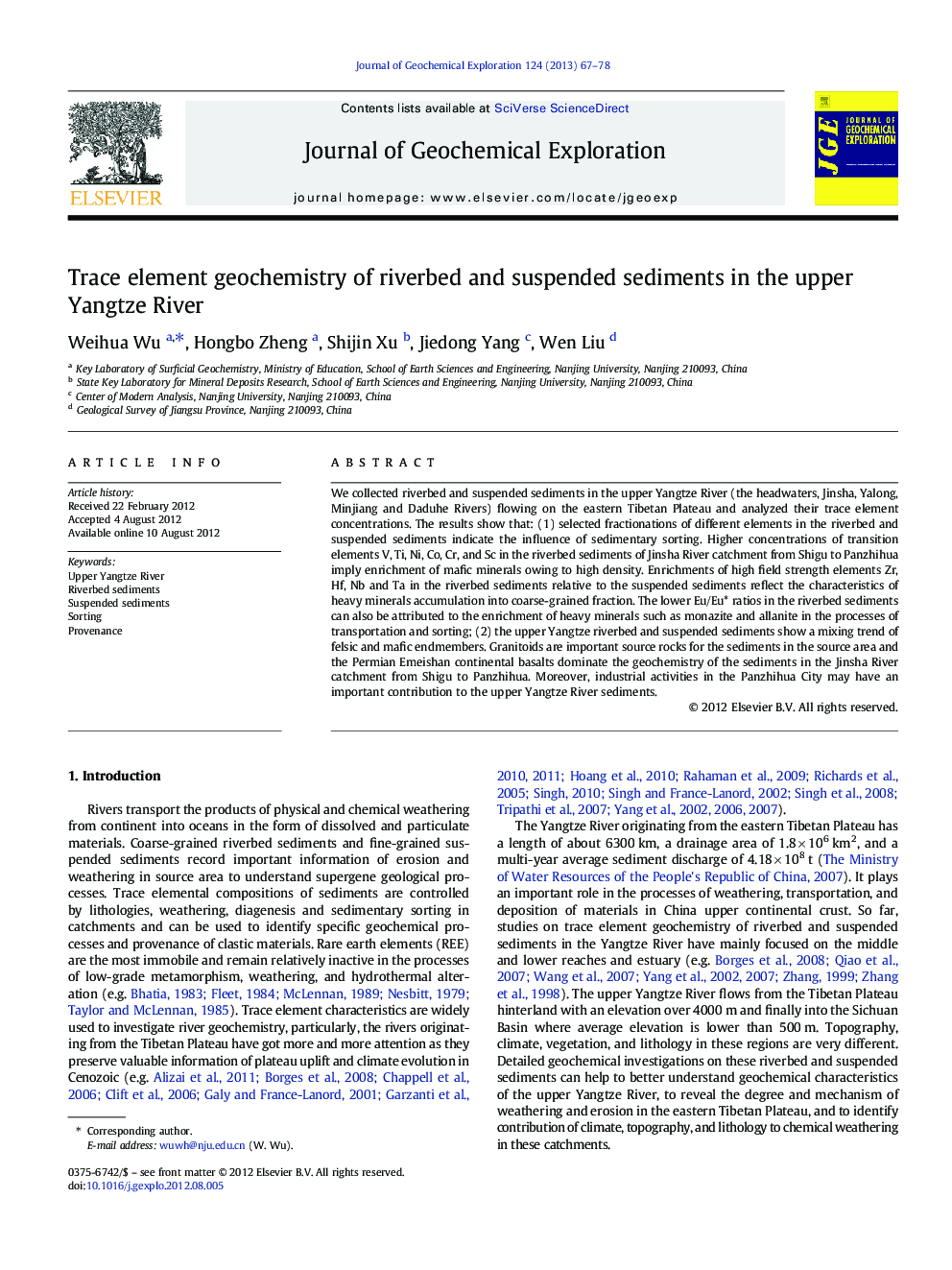| Article ID | Journal | Published Year | Pages | File Type |
|---|---|---|---|---|
| 4457682 | Journal of Geochemical Exploration | 2013 | 12 Pages |
We collected riverbed and suspended sediments in the upper Yangtze River (the headwaters, Jinsha, Yalong, Minjiang and Daduhe Rivers) flowing on the eastern Tibetan Plateau and analyzed their trace element concentrations. The results show that: (1) selected fractionations of different elements in the riverbed and suspended sediments indicate the influence of sedimentary sorting. Higher concentrations of transition elements V, Ti, Ni, Co, Cr, and Sc in the riverbed sediments of Jinsha River catchment from Shigu to Panzhihua imply enrichment of mafic minerals owing to high density. Enrichments of high field strength elements Zr, Hf, Nb and Ta in the riverbed sediments relative to the suspended sediments reflect the characteristics of heavy minerals accumulation into coarse-grained fraction. The lower Eu/Eu* ratios in the riverbed sediments can also be attributed to the enrichment of heavy minerals such as monazite and allanite in the processes of transportation and sorting; (2) the upper Yangtze riverbed and suspended sediments show a mixing trend of felsic and mafic endmembers. Granitoids are important source rocks for the sediments in the source area and the Permian Emeishan continental basalts dominate the geochemistry of the sediments in the Jinsha River catchment from Shigu to Panzhihua. Moreover, industrial activities in the Panzhihua City may have an important contribution to the upper Yangtze River sediments.
► Riverbed and suspended sediments of the upper Yangtze were systematically studied ► Sorting results in fractionation of elements in the riverbed and suspended sediments ► Emeishan basalts are important sediment provenance ► Industrial activities in Panzhihua may have evident impact on sediment geochemistry
